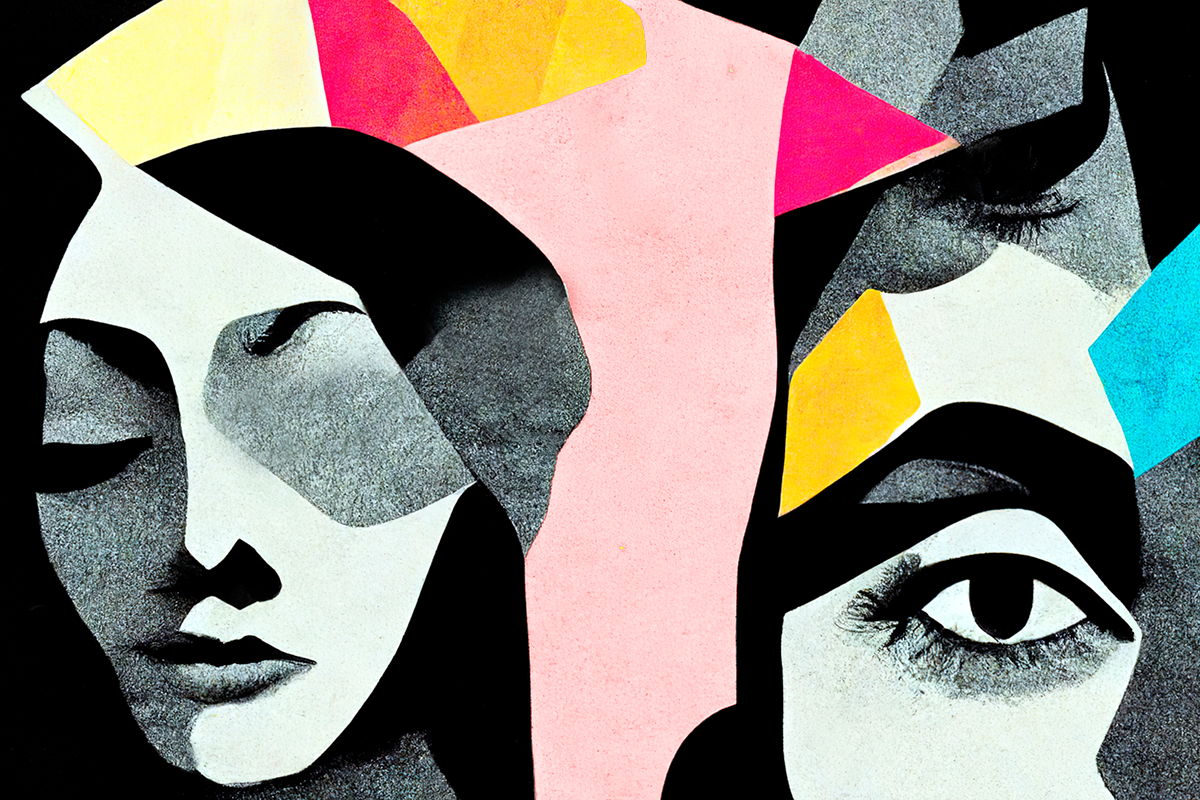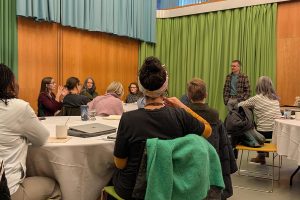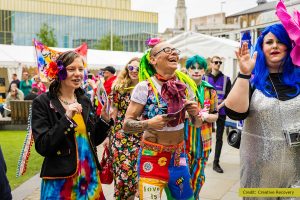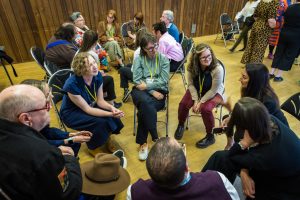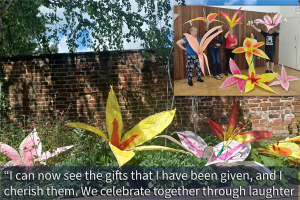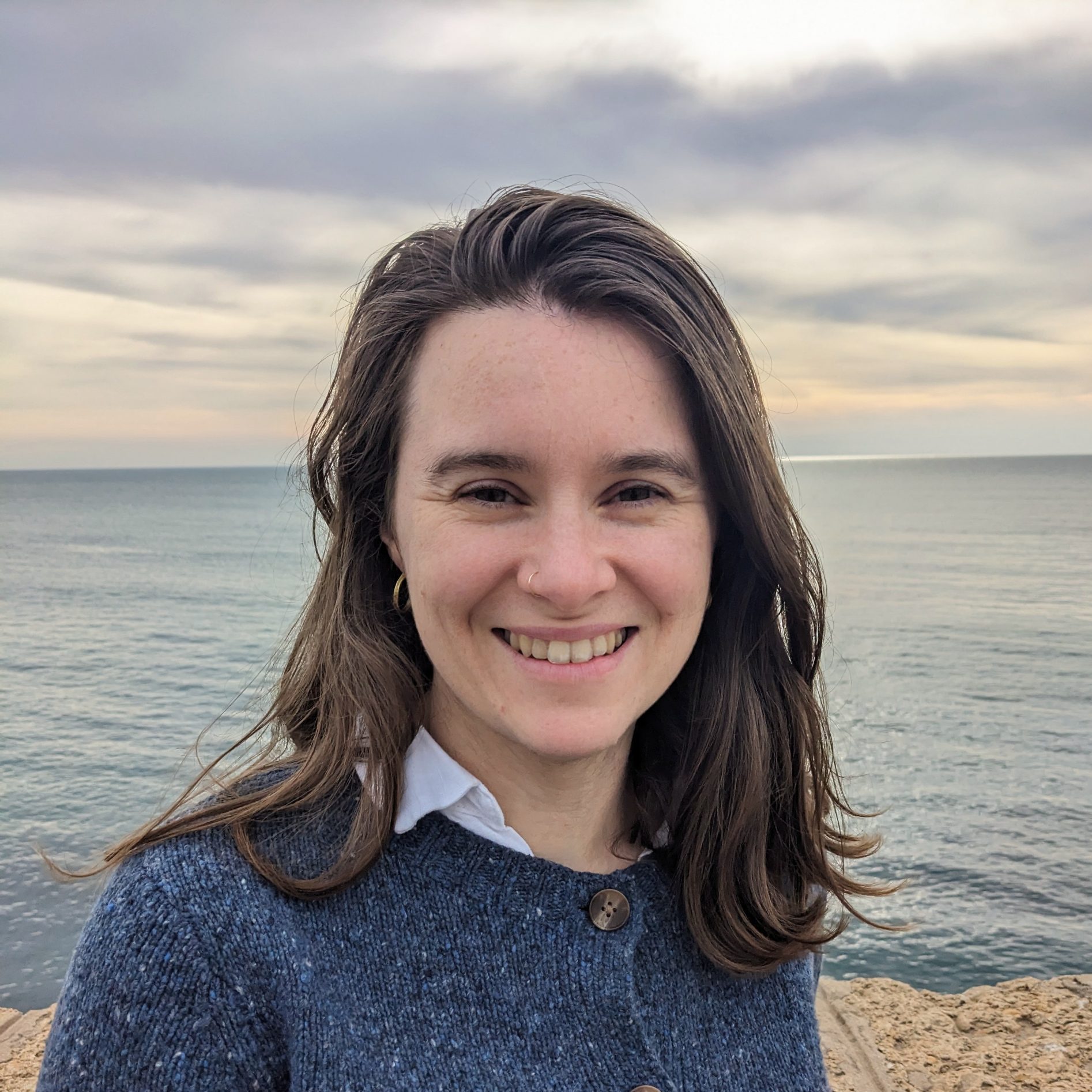
Clair Maleney, Embedded Researcher at Sheffield Hallam University, investigates taking a trauma-informed and relational approach to building future Creative Health Boards and Creative Health offerings.
Last week, my brain laid an egg. I’ll set the scene.
Jardin de tularies, Paris. The warm May sun melting the last traces of my chocolate croissant. Children launch small boats to sail around burbling fountains. White paths stretch in all directions dividing large grassy lawns. A gentle breeze kicks up white dust from the paths coating the vibrant garden borders in a pale pallor.
I’m doing a bit of holiday reading, Trauma and Recovery by Judith Herman (1992) and everything I’m reading seems to beautifully mirror the ecosystem of Creative Health in Doncaster that I’m working with every day.
I text my co-workers and elaborate thesis on theory and praxis with a concluding ![]()
“Glad to see you’re having some light-hearted fun.”
“Switch off, babes!”
Purpose
In this blog I will propose that we can use Judith Herman’s three-stage model of trauma recovery to understand the success of Creative Health Groups in Doncaster.
Introduction
Judith Herman is Professor of Psychiatry at Harvard Medical School, Director of Training at the Victims of Violence Program in the Department of Psychiatry at the Cambridge Health Alliance in Cambridge, Massachusetts, and a founding member of the Women’s Mental Health Collective. She wrote her most famous work, Trauma and Recovery – The Aftermath of Violence, from Domestic Abuse to Political Terror in 1992. Her aim was to bring together the emerging research literature on trauma from researchers working with a number from different communities ranging, as the title suggests, from veterans, genocide survivors, political prisoners, and domestica abuse survivors.
So, what is Trauma?
Trauma is a complex phenomenon. Peg Duros and Dee Crowley describe trauma as, “What happens to a person where there is either too much too soon, too much for too long, or not enough for too long.”
Trauma is a wounding to a person that is very difficult to heal because it becomes etched into a person’s way of experiencing and being in the world.
Trauma typically stems from experiences of overwhelming fear coupled with a powerlessness and inability to escape which overwhelms a body’s usual ability to process and integrate experiences. Instead of being stored as memories, trauma is stored as a collection of nonverbal data otherwise known as implicit memories. This unprocessed nonverbal content becomes the basis of a threat recognition and prediction programme. While this system can be lifesaving in the circumstances where it is formed, the system can over-function and read threats as present in non-threatening situations.
The activation of this threat detection system is referred to as ‘being triggered’ – a term that runs the risk of being too watered down with overuse. Trauma is not processed as a memory (something that happened in the past) thus when trauma is triggered it is experienced as a present moment reality and can be an overwhelming experience of fight/flight impulses, heightened emotional responses, or intrusive sensations images or sounds.
Examples could include someone who has been in a car accident experiencing panic attacks near busy roads, someone with an abusive parent freezing or fleeing at the smell of alcohol, or an abuse survivor feeling overcome with rage witnessing an authority figure telling off a child. Because the conscious mind may not recall the trauma (trauma is not stored as a memory) these individuals may not understand their own reactions to these experiences, which can be extremely disorienting. There can also a great deal of shame put on trauma survivors, either through victim blaming or just friends and family being too overwhelmed to listen. Experiencing invisibility, invalidation and shame can lead to additional traumas and people can develop complex symptoms. Faced with no support, people will develop coping mechanisms as best they can. Coping mechanisms can include what we might think of as positive activities such as sports, arts, and mindfulness, as well as what we might think of as more self-destructive activities such as drugs and alcohol use, shopping addictions, self-harm, or eating disorders.
Trauma can be caused by any number of events including but not limited to: parental neglect or abuse, poverty, natural disaster, assault, a crisis of homelessness, social rejection or bullying, or any number of other experiences. People can also experience trauma indirectly, either passed down through generations, or from witnessing or hearing about the suffering of others.
Symptoms of trauma include anxiety, hypervigilance, insomnia, nightmares, physical sensations, chronic pain, memory disturbances and amnesia, mood swings, impulsive, risky or erratic behaviour, and dissociation.
The effects of trauma are individual and correlate to the size, duration, or quality of the exposure(s) to the traumatizing event(s) or experience(s). The more trauma a person has experienced, the greater the disturbance to their life will be.
No one is immune to experiencing trauma, but there are social protective factors, such as a supportive community, which can increase a person resilience or ability to heal. Thus, not everyone who experiences a potentially traumatic event will experience long term symptoms of trauma.
Studies on ‘Adverse Childhood Experiences’ demonstrate that experiencing trauma in childhood has lifelong adverse effects on individuals’ health and generally decreases resilience to later experiences of trauma.
Why do we want to aim for Trauma informed practice?
At the most basic level, trauma informed practice aims to not repeat or re-enact trauma. It is practice that understands the existence of trauma, and the ways it can affect and shape behaviour and group dynamics.
At the farthest end of the spectrum, it is practice that reduces harmful factors and increases protective factors. With these types of trauma-informed practice there is a focus on relationships and environments that: destigmatise, welcome, include, nourish, support, contain, encourage, empower, and enable autonomy for people.
Being trauma informed is a way of supporting the aims of Creative Health.
Trauma is everywhere, and it’s in the room in high doses when working with communities with high health inequalities. We’ve seen in Emilie’s story circling research that people are using Creative Health as part of a trauma recovery journey.
Creative practice can be a vital part of post traumatic growth, where trauma is transformed into strength, compassion, and empathy.
Judith Hermain’s Model of Trauma Recovery.
How do you heal trauma? Multi-billions of funding have been poured into searches for a ‘quick fix’ to trauma, and so far, none have been found. However, we do know that healing trauma is nearly impossible to do in isolation. As Irving Yalom put it, “It’s the relationship that heals.”
In Trauma and Recovery, Judith Herman proposed a 3-stage framework for understanding Trauma Recovery.
Stage 1: stabilization and safety
Stage 2: coming to terms with the impact of trauma
Stage 3: reconnecting and integration
This is not a prescriptive approach. She merely observes that most people will move through these stages as they are healing. It is important to note that a person can move into and out of any of these stages, and what each stage will look like is different for each person.
Application to Group Work
The section of this book that got my brain racing is Chapter 11 – Commonality, in which Herman applies this framework of individual healing as an approach to designing and running groups that support people on their individual journeys.
Herman writes that group work is powerful if managed well but can be destructive if manged poorly. I’m including two long excepts from her work, so that you can read it in her words.
“…group therapy has shown great promise for trauma recovery because groups can offer such a powerful antidote to the shame and social isolation that afflict trauma survivors. By offering a safe and relatively structured context for peer relationships, groups provide survivors with an experience of acceptance and belonging.
“Groups also provide the occasions for healthy feelings of pride, as members discover that they have much to offer one another. And as group members take in the compassion of others, they gradually develop self-compassion…
“Groups are not easy to run well, and they are not easy to study. Think of all the complications in standardizing individual therapy, and multiply by the number of group members. Nevertheless, enough studies have been done to show that many different kinds of groups seem to be effective treatments for PTSD.” (Herman, 2015, 273-274).
“When groups develop cohesion and intimacy, a complex mirroring process comes into play. As each participant extends herself to others, she becomes more capable of receiving the gifts that others have to offer. The tolerance, compassion, and love she grants to others begin to rebound upon herself. Though this type of mutually enhancing interaction can take place in any relationship, it occurs most powerful in the context of a group…Groups provide the possibility not only of mutually rewarding relationships but also of collective empowerment.
“While in principle groups for survivors are a good idea, in practice it soon becomes apparent that to organise a successful group is no simple matter. Groups that start out with hope and promise can dissolve acrimoniously, causing pain and disappointment for all involved. The destructive potential of groups is equal to their therapeutic promise. The role of the group leader carries with it a risk of the irresponsible exercise of authority. Conflicts that erupt among group members can all to easily re-create the dynamics of the traumatic event, with group members assuming the roles of perpetrator, accomplice, bystander, victim, and rescuer. Such conflicts can be hurtful to individual participants and can lead to the group’s demise. In order to be successful, a group must have a clear and focused understanding of its therapeutic task and a structure that protects all participants adequately against the dangers of traumatic reenactment. Though groups may vary widely in composition and structure, these basic conditions must be fulfilled without exception. …
“Some of the bewildering variability in groups begins to make sense when matched to the therapeutic tasks of each of the three major stages of recovery (see table). First Stage groups concern themselves primarily with the task of establishing safety. They focus on self-care, one day at a time. Second Stage groups concern themselves primarily with the traumatic event. They focus on coming to terms with the past. Third-stage groups concern themselves primarily with reintegrating the survivor into the community of ordinary people. They focus on interpersonal relationships in the present. The structure of each type of group is adapted to its primary task.”
(Herman, 216-217).
| Stages of Recovery | |||
|---|---|---|---|
| Group | One | Two | Three |
| Therapeutic task | Safety | Remembrance and mourning | Reconnection |
| Time orientation | Present | Past | Present, future |
| Focus | Self-care | Trauma | Interpersonal relationships |
| Membership | Homogeneous | Homogeneous | Heterogeneous |
| Boundaries | Flexible, inclusive | Closed | Stable, slow turnover |
| Cohesion | Moderate | Very high | High |
| Conflict tolerance | Low | Low | High |
| Time limit | Open-ended or repeating | Fixed limit | Open-ended |
| Structure | Didactic | Goal-directed | Unstructured |
| Example | Twelve-step program | Survivor group | Interpersonal psychotherapy group |
So how does this relate to Doncaster?
As I was reading this section, I can immediately imagine how see the Creative Health groups I’ve been visiting align with this framework, and how so many of these offerings are built on an implicit understanding of trauma-informed best practices held by the assets and artists that deliver them.
Art groups that provide a safe environment to be creative. Singing groups that help stabilize breathing. Community curated exhibitions that allow people to explore their past. Community theatre groups that enable people to connect with each other and perform in front of a live audience.
These are groups that are targeted to the stages Herman outlined over thirty years ago.
I think it’s important to clarify that just because a group seems to be a Stage 1 group, doesn’t mean that it’s only for people who are needing to build safety, or only intended for people who have experienced trauma. It would just mean that the group is taking a trauma informed approach to what it is offering.
Could something like this be useful for Creative Health Boards?
As our project starts to think about its wider understanding of creative health, I believe that a framework like this could help us take a trauma-informed and relational approach to building future Creative Health Boards and Creative Health Offerings.
I can imagine this would support any Creative Health working with Health Inequalities, which are inherently linked to complex trauma.
It could potentially offer a way for social prescribers to understand what types of groups might be appropriate to suggest or prescribe.
It might help us develop ‘referral pathways’ through Creative Health services. From one group to the next, or to a particular type of group if someone needed additional support.
It could perhaps support thinking about safeguarding approaches for participants and practitioners.
It might enable us to understand if there are certain types of art forms or practices that would be most suited to particular stages or types of groups.
What’s next?
Over the next months through conversations with our team and Creative Health Practitioners in Doncaster I’ll be able to develop a formal proposal for a trauma-informed understanding of creative health.
We may also find that the framework needs some adjustments to transition it from the therapeutic to creative health field, or that there are other more helpful models to understand the breadth of Creative Health activities.
I’d love to hear your thoughts!
How could this be useful for you?
